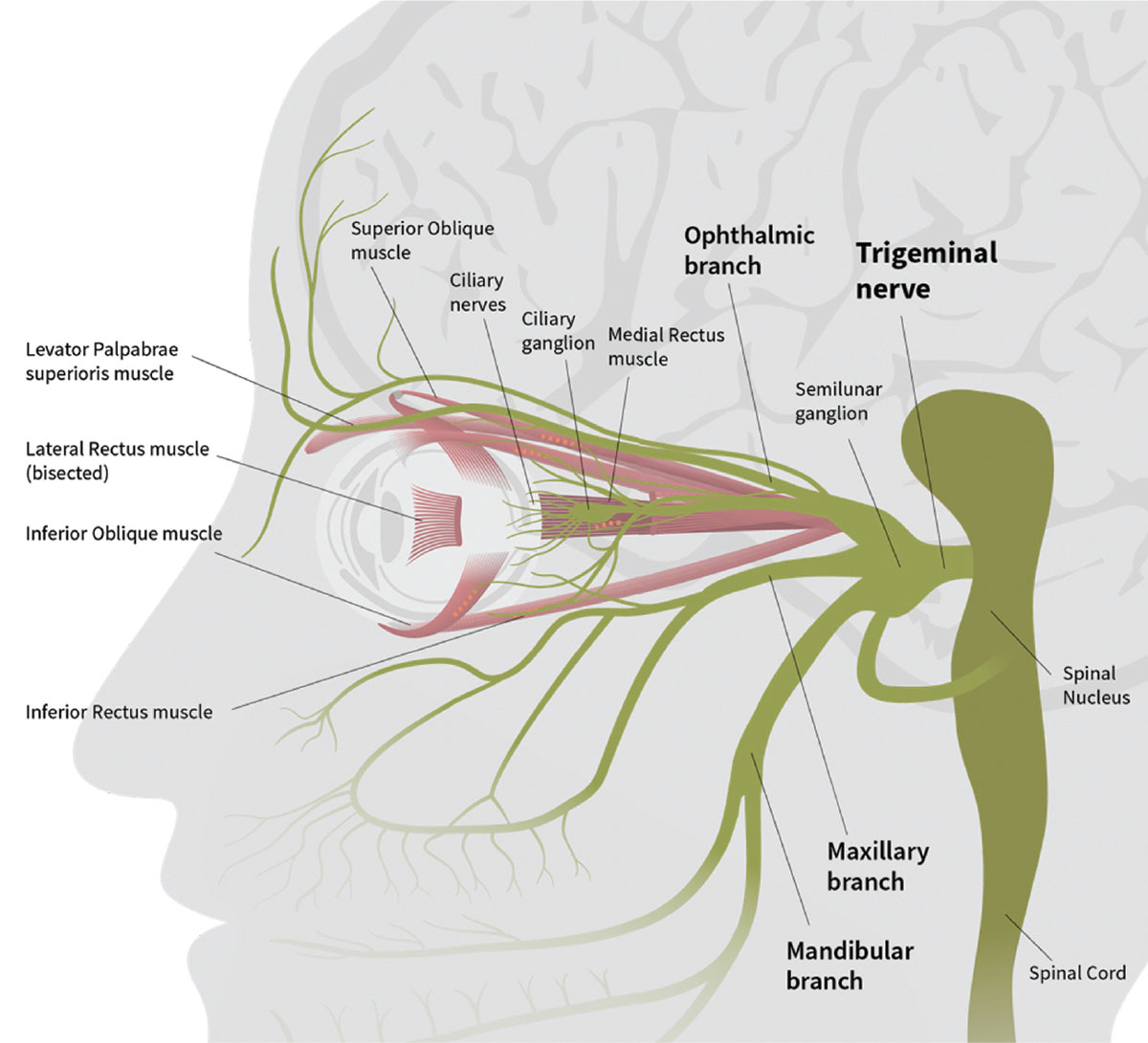 |
|
Ocular surface changes occur in both eyes in trigeminal neuralgia. Photo: EyeBrain. Click image to enlarge. |
As anyone with chronic migraine or headache knows, they affect much more than just your head. A recent paper studying trigeminal neuralgia evaluated the associated ocular surface effects and reported significant alterations.
Trigeminal neuralgia is a type of sensory disorder in the branch(es) of the trigeminal nerve that causes sudden onset and termination of electric shock-like pains triggered by harmless stimuli. The condition may be idiopathic, secondary to another disease or due to neurovascular compression. “Corneal nerves mainly originate from the trigeminal nerve,” the researchers pointed out in their paper. “Neurosensory abnormalities are important factors in ocular surface alterations and dry eye etiopathogenesis.”
The study included 24 patients with idiopathic unilateral trigeminal neuralgia and 24 age- and sex-matched healthy controls. Group one consisted of eyes of the affected sides of trigeminal neuralgia patients, group two consisted of contralateral eyes and group three consisted of the right eyes of controls. All patients underwent tear film and ocular surface testing, as well as conjunctival impression cytology grading.
The researchers reported median Schirmer-1 test results in Groups one, two and three as 5mm, 7mm and 10mm, respectively, with no significant differences among groups. Median tear breakup time (TBUT) scores were seven, eight and 12.5 seconds, respectively, which demonstrated reduced TBUT in Groups one and two. Conjunctival impression cytology grades were higher in Groups one and two vs. Group three. Trigeminal neuralgia patients had a median Ocular Surface Disease Index score that was significantly higher than controls (30.2 vs. 8.3).
“The TBUT findings indicate a high incidence of tear film instability, and conjunctival impression cytology findings indicate cytological changes, including high grades of squamosal metaplasia and goblet cell loss, in patients with unilateral trigeminal neuralgia in not only the eye of the affected side but in the other eye as well,” the researchers wrote in their paper. They noted that subjective dry eye symptoms were also more common among trigeminal neuralgia patients.
“This study suggests that a bilateral pathophysiological mechanism is active in trigeminal neuralgia, leading to bilateral ocular surface abnormalities regardless of the pain and operative procedures performed,” they concluded.
Altas M, Oltulu P, Uca AU, et al. Impact of unilateral trigeminal neuralgia on bilateral ocular surface alterations. Headache. September 2, 2022. [Epub ahead of print]. |

